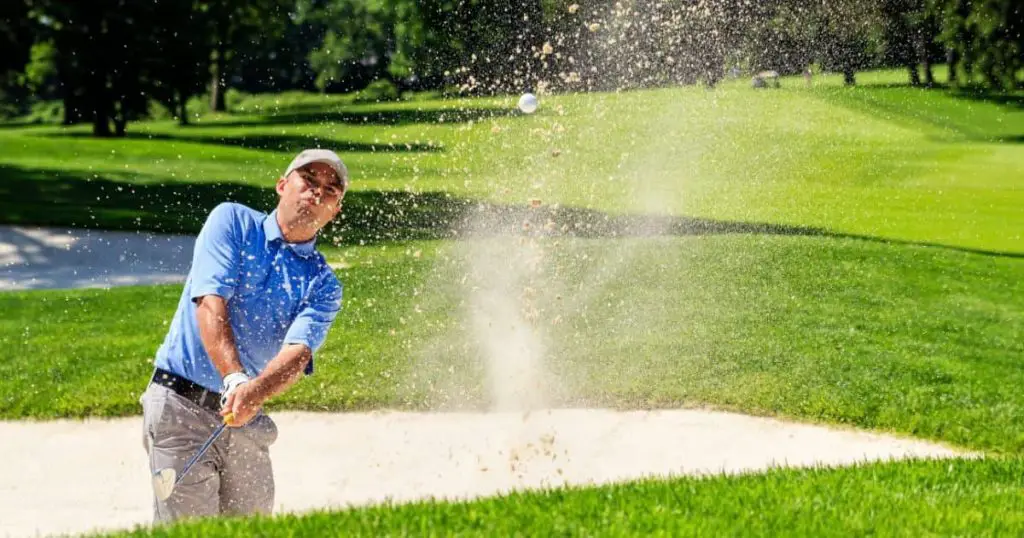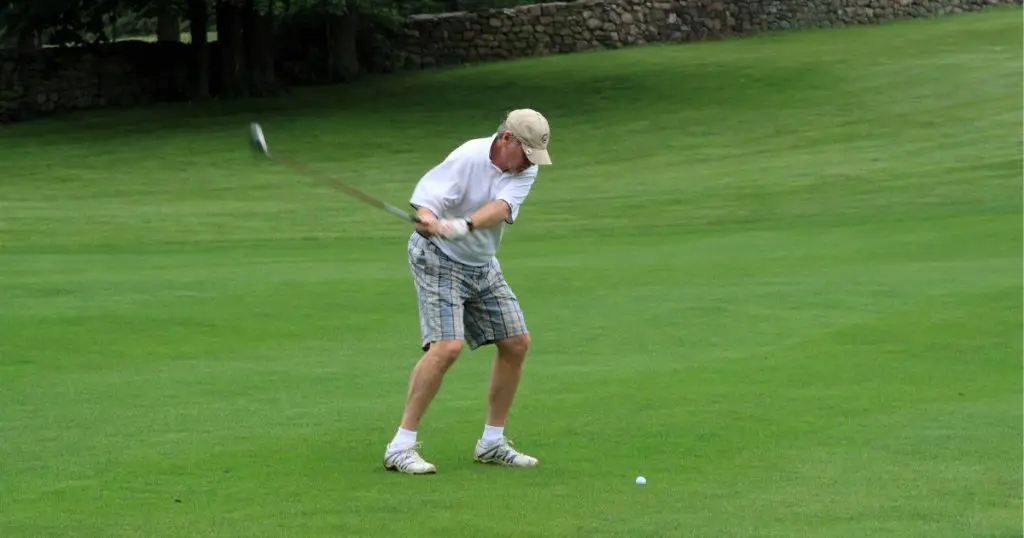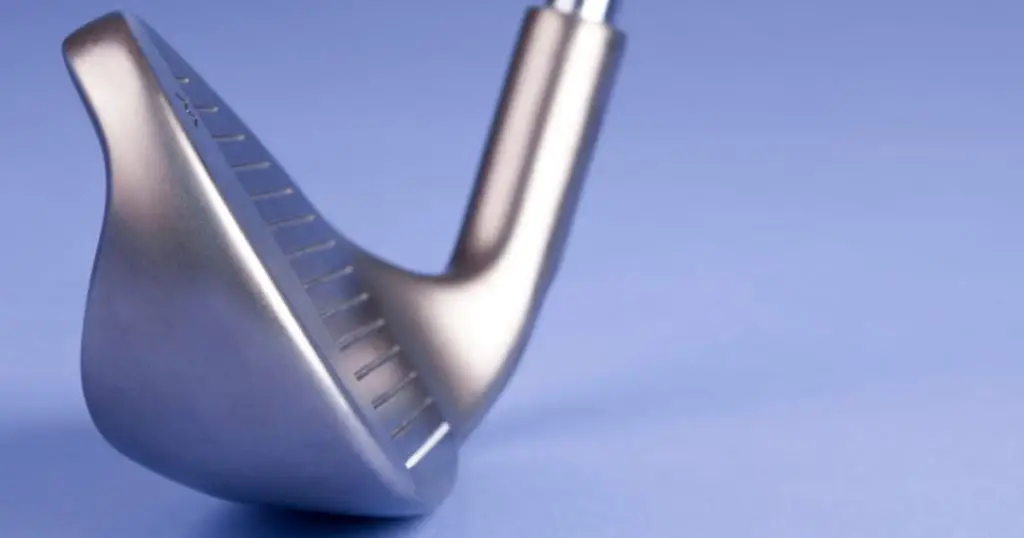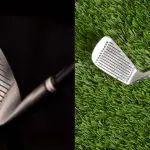A sand wedge is a club many golfers admit they can’t do without. This particular club is convenient for helping you out of a bunker and making shots closer to the green. In addition, it makes it possible to take full swings forapproach shots around 70 to 100 yards.
What makes this possible is the bounce on a sand wedge. It has the widest sole on any club, which makes the bounce generous. However, players have different bounce needs, even when playing with a sand wedge.
So, we will analyze what the best bounce for a sand wedge is in this article and what bounce option will improve your game.
What is Bounce?
Bounce refers to the amount of sole under a wedge to help it ‘bounce’ or bop off the ground when the ball is hit. It is how high the leading edge of a wedge is compared to the sole on flat ground. Without a bounce, a club will dig into the turf rather than shoot, especially on certain surfaces.
Bounce determines the club’s interaction with the turf is appropriate for a shot.The legendary Canadian golfer, Bob Vokey, referred to it as “forgiveness in a wedge.”
Sand wedges have the most bounce degree of any wedge.
Bounce Options for a Sand Wedge
Bounce is usually measured in degrees. Each sand wedge has a loft and a bounce.
The bounce on a sand wedge can range between 6-16 degrees. Wedges with 6-8 degrees of bounce are referred to as low-bounce wedges, an 8-degree wedge is a mid-bounce wedge, while 10-16 degrees are considered high-bounce wedges.
The most common wedge types are 10 and 14 degrees. While 16-degree wedges are rare, golfers use them to get out of very soft turf.
What is the Best Bounce for Sand Wedge?

No specific degree serves in all situations, so the best bounce for a sand wedge depends on the ground surface or course condition, your shot type, and the way you hit.
Golf Course Conditions
Your golf course’s situation primarily influences the right bounce degree.
Soft Sand
Soft sand requires higher bounce. Soft sand usually falls back into itself and leaves round digits in the bunker after you take a shot. Soft fluffy sand will sometimes reach your feet when you walk around.
In this situation, the extra width at the bottom of the club makes it easier to slide your club underneath the sand and skim the wedge to bounce up. This lets the ball have a smooth carpet ride.
The best bounce degree is 12-16 degrees.
Medium to Hard Sand
Medium, hard-to-wet sand usually requires a bounce degree of 8-10. When you walk on this type of sand, it will only dig your shoe in up to the rubber side rather than give way. And you can easily tell if the sand is wet.
Higher bounce angles don’t work well because firm turf conditions don’t allow the fat sole to get deep enough to create bounce space.
The club can sometimes bottom out too early and lead to a chunk. You may even end up hitting the top of the golf ball. An 8-10 bounce angle allows your club to lay flatter down at the ball so it doesn’t bounce off.
Heavy Rough Grass
When golfing in an area where the grasses are tall and heavy, but the sand feels somewhat soft, it’s best to use a sand wedge with a higher bounce. This allows the club to slide under the thick grass. The extra bounce makes the club heavy and thick-soled enough to glide through the grass.
You should use a club of 10-14 degrees of bounce in heavy, rough grass.
Fringes Next to the Green
The grass around the green in the fringe or fairway is often harder and shorter. This is referred to as a tight lie. In this case, it’s best to use a wedge with a low-bounce angle.
A bounce of around 6-10 degrees allows clean ground contact. The leading edge of a high bounce wedge may meet the ball in the equator, making your shots inconsistent.
Low Bounce vs. High Bounce
We will consider the situations where a low bounce wedge and a high bounce wedge are more beneficial.
When You Need a Low Bounce Wedge
Bounce level directly corresponds to forgiveness, so a low bounce wedge has less forgiveness. In some situations, this is precisely what you need.
To Manipulate the Club Face
A low bounce wedge makes it easier to manipulate the club face and open and close it. The low bounce makes it easier for you to hit differently and make club changes without affecting your game.
It’s best if you enjoy being creative with your shots when you are near the green.
If Your Swing is Shallow
Golfers with a shallow swing often do better with a low bounce sand wedge. This happens if you usually take the club back a bit low and inside, or your angle of attack causes more of a pick than a dig.
Your wedge game may be weak because the wedge configuration isn’t suitable for you. Usually, when the wedge is skipping over the grass as it should, it may hit the ball part of the actual golf ball. This will result in abladed shot.
In this case, using a low bounce wedge will balance your equipment to your swing type.
If Golf Course is Hard
As mentioned above, a low bounce sand wedge (6-10 degrees) is the best when the golf course is hard. It’s also the ideal wedge type for a tight lie.
When You Need a High Bounce Wedge

A high bounce is not always ideal or preferred, but in some situations, it can give you some help and forgiveness that an iron short doesn’t. This is similar to how a 4-iron makes a hybrid easier.
A high bounce wedge is often better for:
Straight and Precise Players
A high bounce wedge may be the best choice if you prefer using a piece of equipment exactly as it is designed.
Some golfers don’t enjoy manipulating the club face when working on shots around the green. So, a high-bounce sand wedge will serve you well if you want the confidence to get your ball up in the air without modifying your shots.
Steep Swingers
You will enjoy a high bounce wedge if you have a steep golf swing and tend to make deep divots after contact.
Using a wedge with a higher bounce will improve your steep angle and make your divots less pronounced.
Golfers Who Hit Behind the Ball
If you tend to hit a chunk or hit the ball flat, a high bounce wedge may help your game. The club digs in and gets stuck when you hit behind the ball, and this can be very frustrating when you are around the green.
A high bounce wedge will help your wedge bounce. This means your wedge will travel over the turf, through the grass and dirt, to reach the golf ball.
If Golf Course is Soft
A golf course with sand, softer turf, or higher rough requires a high bounce wedge. For example, this may be the case if you are playing in your home course or on non-professional grounds.
The high bounce helps the wedge move through the sand and make contact with the ball.
Best Bounce for a 56-Degree Wedge
The standard loft degree on a sand wedge is 56. Most companies mark the wedge’s sole with ‘S’ to show it’s a sand wedge. When you buy a set of irons, the sand wedge that comes with it is usually 55-56.
The best bounce for this loft degree is 10-12 degrees. This mid-range number makes your wedge versatile, so you can play in several course conditions.
However, if you want to be more intentional, you can search your club’s specs on Google to find out your pitching wedge’s lodge. You should base your sand wedge’s degrees of loft on the loft of your gap wedge, lob wedge, and other clubs.
Frequently Asked Questions
Here are some popular questions other golfers interested in sand wedges ask.
How do I know the bounce angle of my club?
The bounce angle is usually written on the bottom of the club. However, some companies don’t write it on their golf wedges. In this situation, it’s safe to assume that your club’s bounce angle is between 8 and 12.
Companies have different standard bounce angles as they design their clubs differently.
What bounce wedge do pros use?
When course conditions used to be firmer, many pros used the lower bounce wedges. But recently, PGA tour pros prefer wedges between 12 and 13 degrees of bounce.
Can you use a sand wedge in the fairway?
You can use a sand wedge in the fairway. The high loft provides great spin control, and the large bounce angle allows more forgiveness when you make contact with the ball.
What sand wedge brand can I buy?
Several golf brands are making great sand wedges. Some of them are Titleist, Cleveland, TaylorMade, Ping Glide, Callaway, Mizuno, Honma T, Cobra King, etc.
Final Thoughts
The best bounce for a sand wedge depends on the course conditions and a golfer’s style. Hard grounds call for low bounce wedges, while softer conditions require high bounce wedges. A good balance for most courses is a 56 loft wedge with a 12-degree bounce.
Still, you should note that every brand makes a different wedge degree per loft, so it’s best to consider your golfing conditions to choose the right amount of bounce.







